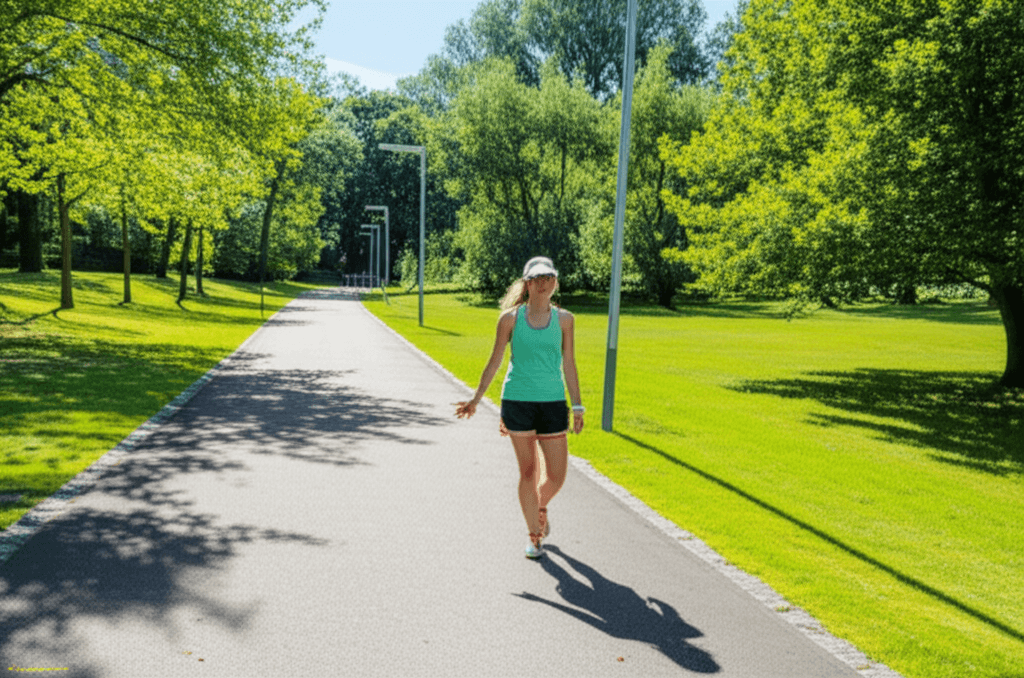The rhythmic swing of arms, the steady cadence of footsteps, the fresh air—daily walking is often hailed as a simple, accessible path to health. But as you lace up your shoes for another stroll, a common question arises: is walking every day enough to truly stay fit? The answer is nuanced, depending largely on your definition of “fit” and how you approach your daily walk.

What Does “Staying Fit” Really Mean?
“Fitness” is a broad term encompassing several key components, not just a number on the scale. A holistic approach to fitness typically includes:
- Cardiovascular Health: The ability of your heart and lungs to deliver oxygen to your body’s tissues during sustained physical activity.
- Muscular Strength: The maximum force a muscle can exert.
- Muscular Endurance: The ability of a muscle to continue to perform without fatigue.
- Flexibility: The range of motion around a joint.
- Body Composition: The proportion of fat and non-fat mass in your body.
- Balance and Coordination: Especially important for healthy aging.
Understanding these facets is crucial to evaluating whether any single activity, including walking, is sufficient.

The Undeniable Benefits of Daily Walking
Walking is a low-impact exercise that offers a multitude of health advantages, making it an excellent cornerstone for physical activity.
- Improved Cardiovascular Health: Regular brisk walking can significantly lower the risk of heart disease, stroke, and Type 2 diabetes by promoting good circulation, lowering blood pressure, and reducing LDL (bad) cholesterol. Even a brisk 10-minute daily walk contributes to your heart health.
- Weight Management: Walking burns calories and can help reduce excess body fat, including visceral fat, which is linked to severe health conditions. Consistency and intensity are key for fat loss.
- Stronger Bones and Joints: As a weight-bearing exercise, walking helps strengthen bones, reducing the risk of osteoporosis and fractures. It also keeps joints lubricated and flexible, potentially relieving pain.
- Boosted Mood and Mental Well-being: Daily walks can manage stress, anxiety, and symptoms of depression. Studies show a correlation between more steps taken and improved moods, and walking can release natural painkilling endorphins. Walking outdoors can also boost Vitamin D production.
- Enhanced Immunity: Regular walking can bolster your immune system, potentially leading to fewer sick days.
- Improved Sleep Quality: Engaging in a daily walk, even for 20 minutes, can help lower cortisol levels, aiding relaxation and promoting better sleep.
- Cognitive Benefits: Walking can improve memory and reduce the risk of cognitive impairment, including Alzheimer’s disease and other forms of dementia, as you age.

Where Walking Alone Falls Short
While highly beneficial, relying solely on walking may not provide a comprehensive fitness regimen, especially if your goals extend beyond basic health maintenance.
- Limited Muscle Strengthening: While walking tones leg and abdominal muscles, and even arm muscles if you pump them, it doesn’t build significant strength in all major muscle groups (like the upper body, back, and core) as effectively as dedicated strength training. It primarily uses one plane of motion and offers a short range of motion, which limits its ability to improve overall flexibility and mobility.
- Insufficient Metabolic Boost: While walking burns calories during the activity, strength training has a more lasting impact on metabolism by building muscle mass, which continues to burn calories even after a workout.
- Lack of Progression for Advanced Fitness: For continuous improvement, exercise needs progression—gradually increasing difficulty, duration, or intensity. While walking can be intensified, it may not offer the same level of challenge for advanced fitness gains as other forms of exercise like running, cycling, or high-intensity interval training (HIIT).
- Balance and Posture: While walking can improve balance, particularly for older adults when combined with other exercises, it may not adequately address poor posture or prevent falls as effectively as targeted balance and core exercises.

Maximizing Your Walking Routine for Enhanced Fitness
To make daily walking a more comprehensive workout, consider incorporating elements that increase its intensity and engage more muscle groups.
- Increase Intensity and Pace:
- Brisk Walking: Aim for a pace where you can talk but not sing. This elevates your heart rate and breathing. The American Heart Association considers brisk walking (at least 2.5 miles per hour) a moderate-intensity aerobic activity.
- Interval Training: Alternate short bursts of very fast walking (where your heart pumps fast) with periods of a more comfortable pace. Even 30 seconds of faster walking followed by two minutes of normal pace can be beneficial.
- Add Inclines: Walking uphill, using stairs, or adjusting a treadmill incline significantly increases calorie burn and strengthens leg muscles, glutes, hamstrings, and quadriceps.
- Add Resistance:
- Weighted Vest or Backpack: Wearing a weighted vest or adding weight to a backpack (e.g., water bottles) increases resistance and calorie expenditure. Be cautious not to go too heavy too fast to avoid back strain.
- Hand or Ankle Weights: Light hand weights or ankle weights can add resistance to your upper body or lower body respectively.
- Incorporate Bodyweight Exercises: Stop during your walk for short bursts of bodyweight exercises like squats, lunges, push-ups (against a bench or wall), or planks to engage major muscle groups.
- Focus on Form: Maintain good posture, engage your core, and swing your arms bent at 90 degrees with a heel-to-toe stride. Proper arm movement can increase stride and speed, burning more calories.
- Vary Your Terrain and Routine: Switch between paved paths, trails, hills, or even sand to challenge different muscles and keep your routine engaging.

The Power of a Balanced Fitness Regimen
Most health organizations recommend a combination of aerobic activity and muscle-strengthening exercises for adults.
- Aerobic Activity: The Department of Health and Human Services recommends at least 150 minutes of moderate-intensity aerobic activity (like brisk walking) or 75 minutes of vigorous-intensity aerobic activity per week, preferably spread throughout the week.
- Strength Training: Adults should also aim for moderate to high-intensity muscle-strengthening activities involving all major muscle groups on at least two days per week. This can include exercises using weights, resistance bands, or your own body weight.
Combining walking with strength training offers comprehensive benefits, including improved muscle strength, bone density, metabolism, joint function, and mental health. For example, you can walk on some days and do strength training on alternate days, or integrate short strength exercise intervals into your walks.
Conclusion
Daily walking is a powerful tool for maintaining good health and can contribute significantly to overall fitness, particularly cardiovascular health, mood, and weight management. However, for a truly well-rounded fitness level that encompasses strength, flexibility, and balance, walking alone is often not enough. By incorporating brisk paces, inclines, short bursts of higher intensity, and complementary strength training activities, you can transform your daily walk into a more effective workout and achieve a more comprehensive state of fitness. The key is to see walking as a vital component of a varied and progressive exercise routine, rather than the sole solution.







